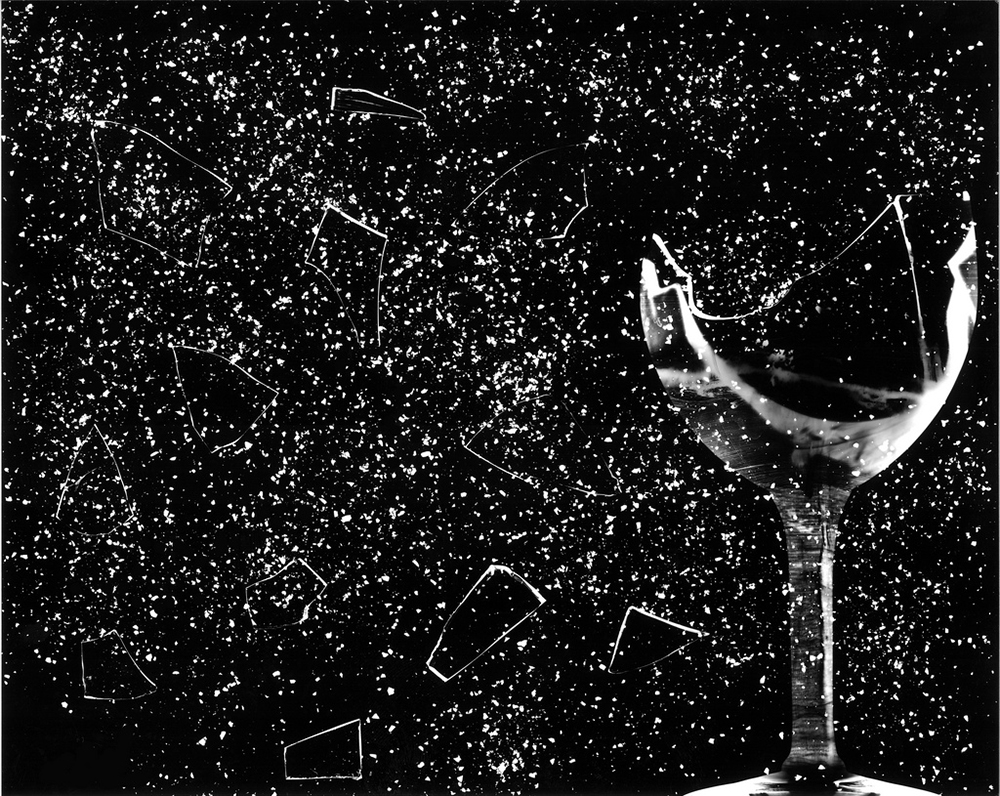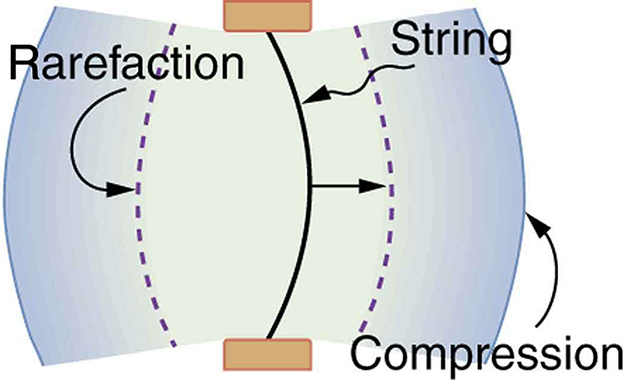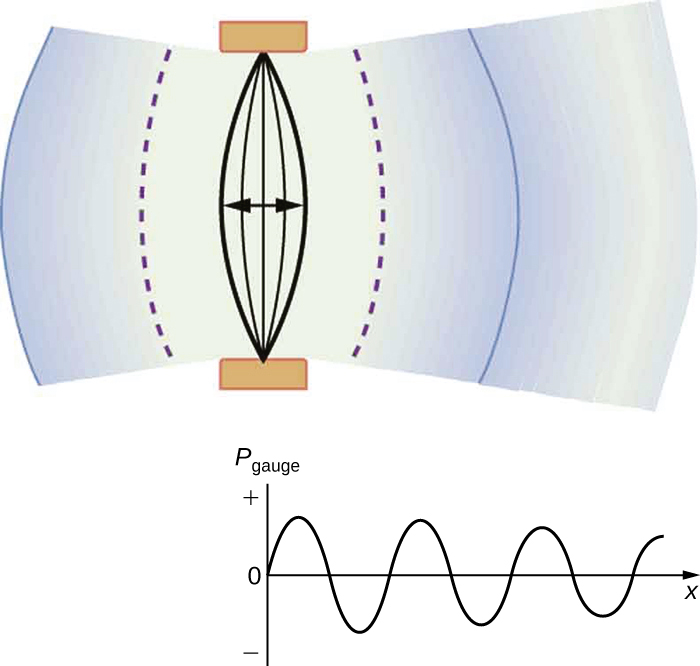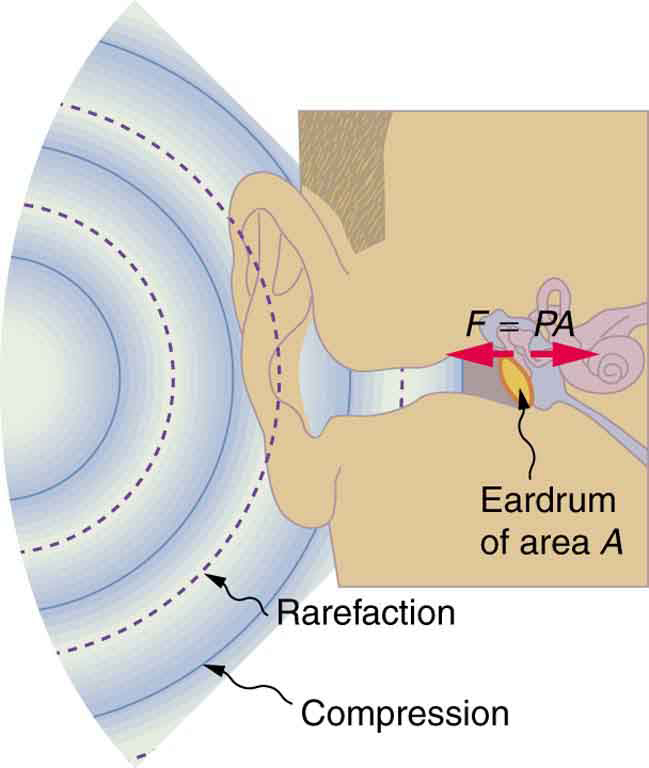Oscillatory Motion and Waves and Physics of Hearing.
128 Sound
Learning Objectives
- Define sound and hearing.
- Describe sound as a longitudinal wave.

Sound serves as a familiar and powerful example of wave behavior. Because hearing is one of our most essential senses, studying sound offers a natural bridge between physics and biology. Hearing is the perception of sound, just as vision is the perception of light. However, sound waves also have important applications that go beyond hearing. For instance, ultrasound—high-frequency sound waves above the range of human hearing—is widely used in diagnostic imaging and physical therapy.
From a physical perspective, sound is defined as a disturbance in matter that travels outward from a source. Sound waves are compressions and rarefactions in a medium such as air, water, or tissue. At the atomic level, this disturbance is far more organized than the random motion due to thermal energy. In many cases, sound waves are periodic and the atoms move in simple harmonic motion. This text will focus primarily on such periodic waves.
Consider a vibrating string as shown in Figure 128.2, Figure 128.3, and Figure 128.4. As the string oscillates, it compresses and expands the air around it, producing regions of high and low pressure. These pressure variations travel through the medium as longitudinal waves. In gases and liquids, sound waves are always longitudinal due to the lack of shear strength. In solids, both longitudinal and transverse sound waves can propagate. The graph in Figure 128.4 shows pressure variation as a function of position for such a sound wave.



As sound waves propagate, their amplitude decreases with distance. This occurs partly because energy spreads out over a larger area and partly because energy is absorbed by materials. In the body, this is seen when sound waves enter the ear and are detected by the eardrum, as shown in Figure 128.5. Additionally, thermal energy is generated as sound waves cause air molecules to vibrate—some heat is transferred during compressions and less during rarefactions, leading to an overall energy loss. This process connects to the second law of thermodynamics, which governs the conversion of organized energy into disordered thermal motion.

PhET Explorations: Wave Interference
Make waves with a dripping faucet, audio speaker, or laser! Add a second source or a pair of slits to create an interference pattern.
Section Summary
- Sound is a disturbance of matter that is transmitted from its source outward.
- Sound is a type of wave, often longitudinal in nature.
- Hearing is the biological perception of sound waves by the auditory system.
Glossary
- sound
- a disturbance of matter that is transmitted from its source outward
- hearing
- the perception of sound
a disturbance of matter that is transmitted from its source outward
the perception of sound

